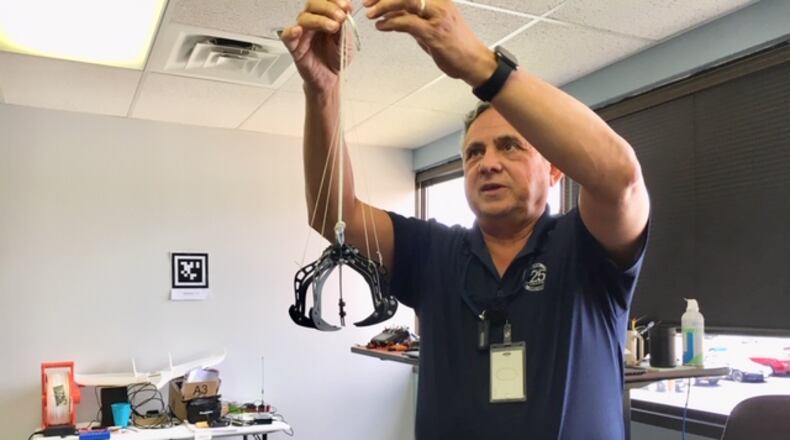Ben Bosma, a retired Air Force fighter pilot and senior development engineer for Beavercreek defense contractor MTSI Inc., helped make that first-ever image possible.
RELATED: First image of black hole released, watch the video
In the early 1990s, Bosma invented a lathe machine tool capable of cutting aluminum mirror surfaces down to extremely slim slices, in some cases less than a mere micron of depth. (A human hair is 70 to 100 microns in diameter, by comparison.)
“You have to have a pretty doggone accurate machine to do that,” Bosma said.
James Moran, a Harvard professor emeritus of astrophysics, said he started to work with Bosma some 25 years ago, when Moran was with the Smithsonian Astrophysical Observatory.
At the time, a photograph of a black hole was not an immediate goal. The main use envisioned at the time was to study molecules in clouds that condense into stars.
“The SMA (sub-millimeter mirror array) was critical to this whole project,” Moran said. “The SMA was one of the earlier anchors in the whole project.”
As Moran explained in an email, a critical element in the SMA was the reflectors, whose panels were made by Bosma to an accuracy of 5 micrometers.
“At the time the SMA was under construction in the late 1990s- early 2000s, these were the most accurately configured radio telescope panels in the world,” Moran said.
Bosma and his family’s company, Bosma Machine and Tool Corp., manufactured eight reflectors for an array of mirrors for an Event Horizon Telescope, part of a series of eight telescopes that together found and captured the black hole image.
The Tipp City company created the mirrors and made the primary six-meter reflector, along with several downstream mirrors. The business also made a pedestal and counter-weights and other implements.
Bosma said the work was a collaboration by a number of vendors. But he added: “We did the big stuff, the hard stuff, the primary mirror, as it were. And we did that all in Tipp City, in our plant on (Ohio) 40, in Bethel Twp.”
“My invention was a machine that made it possible, that made it possible to create a mirror that accurate, out of metal,” he said.
MORE: West Chester company is having a great week at the Paris Air Show
The mirrors were transported to a telescope in Hawaii, where they were assembled and put into service. That telescope was one of eight that captured the black hole’s image.
NASA said the image shows the shadow of a “supermassive black hole” in the center of an elliptical galaxy some 55 million light-years from Earth.
“This black hole is 6.5 billion times the mass of the Sun,” NASA said. “Catching its shadow involved eight ground-based radio telescopes around the globe, operating together as if they were one telescope the size of our entire planet.”
Black holes are made up of huge amounts of matter squeezed into a small area, creating a massive gravitational field which draws in everything around it, including light — hence, their name.
For some 55 million years, photons — particles of light — from that black hole surged toward earth at the speed of light.
Those photons struck implements and reflectors devised by Bosma.
MORE: One of the region's biggest employers is applying for a $15M plant expansion
The image presented to the public shows a halo or ring of red-orange around a dark center.
“Some of the photons get sucked into the black hole,” Bosma said. “But the ones that came out to us are that ring” of red-orange.
“And the first thing it hits is your (invention),” said William Gideon, MTSI director of Air Force acquisition and technology business.
Gideon praised Bosma’s ingenuity, saying the former pilot is one of the smartest people he has ever met. “Every idea leads to another idea,” Gideon said.
“He is completely bright and interactive,” Moran said.
“We have seen what we thought was unseeable,” Shep Doeleman, director of the Event Horizon Telescope Collaboration, said in April. “We have seen and taken a picture of a black hole.”
Bosma Machine and Tool Corp. shut its doors in 2003, a victim of an aerospace industry downturn after the events of 9/11. Ben’s brother Lee is a sales engineer at Dayton Precision Aerospace Inc.
“To us, it was just another machine, it was just another job,” Ben Bosma said of the lathe machine he invented. “But it found the black hole.”
About the Author

